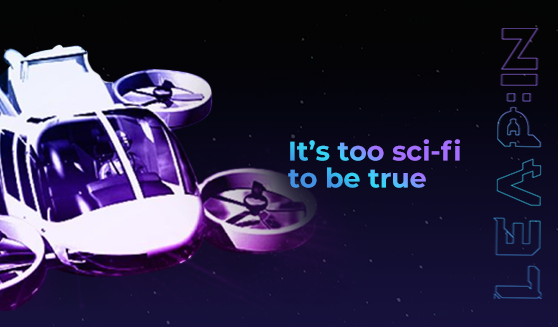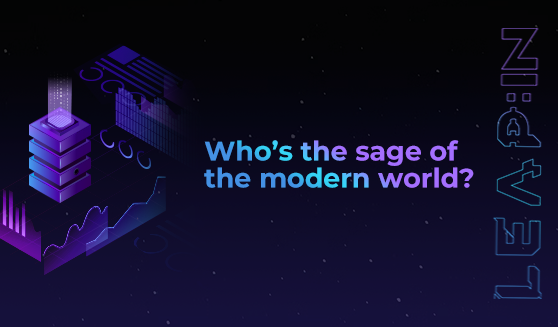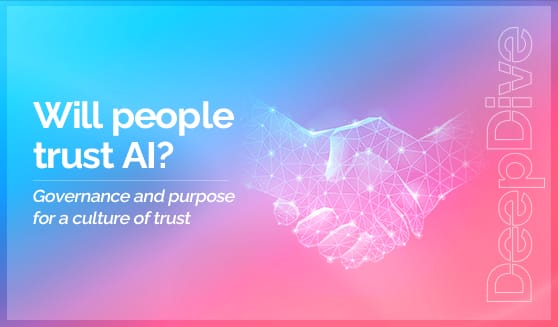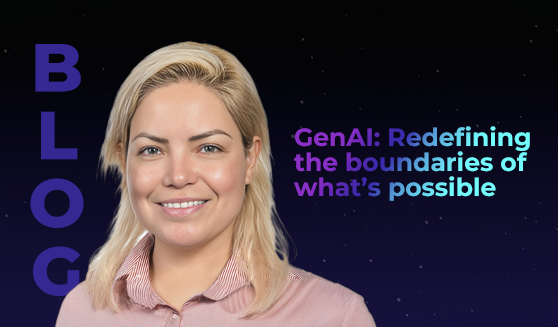
We’ve been busy asking questions: getting insider-perspectives from #LEAP23 speakers on the latest technology developments. Here’s our weekly pick of quotes from some of the global tech leaders in February’s line-up.
subscribe
This week we’re quoting…
Clem Newton-Brown (CEO at Skyportz)
What Newton-Brown said:
“A lot of people believe that it’s very sci-fi and too incredible to believe that these aircraft will exist soon. However, compared to flying millions of people safely around the world at great speeds in jets, I think that small, short range electric aircraft are going to be very achievable for the companies working on prototypes.”
What else did people think was too sci-fi to be true?
In case you don’t already know, Newton-Brown was talking about electric air taxis, or ‘electronic vertical take off and landing’ vehicles (eVTOLs). We asked why not many people are talking about eVTOLs yet – and he pointed out that lots of people think they’re too sci-fi to be real.
So let’s talk about science fiction writer Arthur C. Clarke for a minute.
We’re not saying that eVTOLs are on the same level of sci-fi as the ideas Clarke wrote about in the mid-20th century; because eVTOLs do actually exist already.
But Clarke came up with loads of tech ideas that people thought were way beyond the realms of potential reality. And a surprising number of them did come true.
Like…
- In his novel 2001: A Space Odyssey, Arthur C. Clarke wrote about HD screens attached to keyboards that allowed people to communicate with others from any distance, via video calls. Doesn’t sound far-fetched at all in 2022, does it?
- Most people know he predicted what modern mobile phones might look and feel like – but what isn’t talked about so often is the fact that Clarke also predicted how handheld connectivity devices would completely change (or in his words, ‘restructure’) our society.
- In the novel Imperial Earth, Clarke expanded on his earlier prediction that “one day we may have brain surgeons in Edinburgh operating on patients in New Zealand.” And now? Telesurgery is really happening, using VR and XR tech to enable expert surgeons to support other surgeons anywhere in the world.
So what’s our point?
Our point is that people are often skeptical of new ideas. It’s not easy to introduce an entirely new way of doing something to a population that’s very comfortable with the old way of doing that thing (even if the old way is inconvenient, or inefficient, or illogical).
So innovators working on schemes like urban air mobility – trying to get the general public into the air in electric drones – have a lot of trust-building to do.
It’s not surprising that most people need to see an eVTOL in flight in order to believe they could fly to work in one. But we will see them in flight soon.
subscribe
This week we’re also quoting…
Ian Mahoney (Director of Engineering Platforms at New Look)
What Mahoney said:
“Data is clearly one of the most valuable assets on the planet, and being able to understand and use that data in the right way is what is required to give yourself a competitive and a commercial advantage.”
Do sci-fi writers think about data too?
Yes. Definitely. And actually, if you look back at the sci-fi ideas that have emerged as real life technologies, almost all of them relied on the foundational concepts of data collection, analysis, and implementation.
We’re just speculating here…but maybe data is the determining factor in whether or not a sci-fi idea is likely to come true.
Think about it:
In the 1989 movie Back to the Future II, there was a scene where Doc looked at his multi-functional wristwatch to check exactly how long the rain would last. Weather prediction tools in 1989 certainly couldn’t forecast the precise timing of a rain shower – but meteorology tech today can (sort of, almost) do that, using real-time data from IoTs that’s updated minute-by-minute.
In 2001: A Space Odyssey, Clarke’s AI-powered robot HAL 9000 was a perfect – if slightly terrifying – example of how data-driven machine learning could enable an AI to pursue its mission more and more competently, and at any cost.
We won’t tell you what HAL did, just in case you haven’t read the book or seen the movie. But let’s just say the mission was…murderous.
And now AI is doing a real life (and less murderous) version of pursuing its human-given goals. Take self-drive cars, for example. They’ve got the ultimate goal of becoming safe on the roads, and machine learning is enabling them to do that. Every car across an entire network can learn instantly from data collected from every other car, so that no car will ever repeat a mistake that just one car made.
What data dream do you wish would come true?
We love hearing the incredible ideas that tech innovators have for a future driven by data. If you could use data to change one thing about the way we live our lives, what would it be?
subscribe








